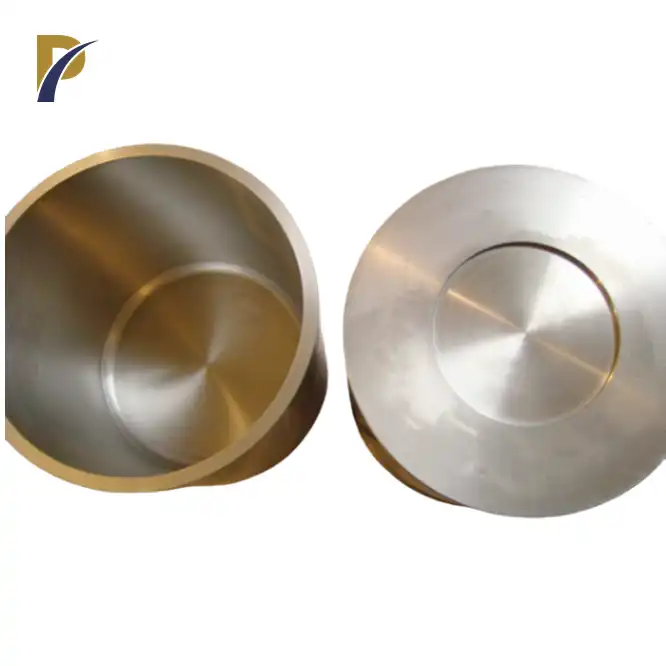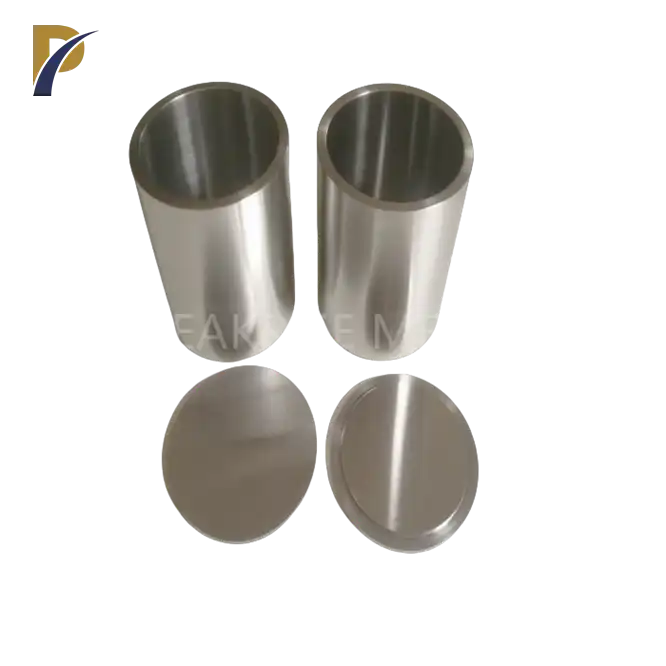Essential Cleaning and Inspection Techniques for Molybdenum Crucible Liners
Proper Cleaning Methods for Optimal Performance
Maintaining the cleanliness of your molybdenum crucible liner is paramount to its longevity and efficacy. Begin by allowing the liner to cool completely before initiating any cleaning procedures. Gently remove any loose debris or residue using a soft-bristled brush or compressed air. For more stubborn deposits, consider using a mild, non-abrasive cleaner specifically formulated for refractory metals. Avoid using harsh chemicals or abrasive materials that could potentially damage the liner's surface. After cleaning, thoroughly rinse the liner with distilled water and dry it meticulously to prevent oxidation.
Conducting Thorough Visual Inspections
Regular visual inspections are crucial for early detection of potential issues with your molybdenum crucible liner. Examine the liner's surface for any signs of discoloration, pitting, or cracks. Pay close attention to areas that are subjected to high stress or frequent contact with molten materials. Utilize a magnifying glass or borescope to inspect hard-to-reach areas and identify minute imperfections. Document your findings and track any changes over time to establish a baseline for the liner's condition and predict when replacement may be necessary.
Implementing Non-Destructive Testing Techniques
To complement visual inspections, consider employing non-destructive testing (NDT) techniques to assess the integrity of your molybdenum crucible liner. Ultrasonic testing can help detect internal flaws or thickness variations that may not be visible on the surface. Eddy current testing is another valuable method for identifying surface and near-surface defects in conductive materials like molybdenum. These advanced inspection techniques can provide valuable insights into the liner's overall condition and help prevent unexpected failures during operation.
 |
 |
Optimal Handling and Storage Practices for Molybdenum Crucible Liners
Proper Handling Techniques to Prevent Damage
When handling molybdenum crucible liners, it's essential to exercise caution to avoid accidental damage. Always use clean, dry gloves to prevent contamination and protect the liner's surface from oils and moisture present on skin. When moving the liner, support it evenly to distribute weight and prevent stress concentrations. Avoid dropping or impacting the liner, as molybdenum can be brittle and susceptible to cracking under sudden stress. If transporting the liner, use appropriate padding and secure it to prevent movement during transit.
Ideal Storage Conditions for Longevity
Proper storage is crucial for preserving the integrity of your molybdenum crucible liner when not in use. Store the liner in a clean, dry environment with controlled humidity to prevent oxidation. Consider using desiccant packets or a dehumidifier to maintain low moisture levels in the storage area. Keep the liner away from corrosive substances and chemicals that could potentially react with the molybdenum surface. If possible, store the liner in a vertical position to minimize stress on any single point. For long-term storage, consider using a protective coating or wrapping the liner in oil-free paper to provide an additional barrier against environmental factors.
Implementing a Rotation System for Even Wear
To maximize the lifespan of your molybdenum crucible liners, implement a rotation system if you have multiple liners in use. This practice helps distribute wear more evenly across all liners, potentially extending their overall service life. Keep detailed records of each liner's usage time and rotation schedule. This data can help you identify patterns in wear and optimize your maintenance routines. Additionally, rotating liners can provide valuable insights into the performance of different batches or manufacturers, allowing you to make informed decisions when sourcing replacements.
Temperature Management and Operational Best Practices
Controlling Temperature Gradients and Thermal Shock
Effective temperature management is crucial for preserving the integrity of your molybdenum crucible liner. Gradually heat and cool the liner to minimize thermal shock, which can lead to cracking or warping. Implement precise temperature control systems to maintain consistent operating temperatures and avoid sudden fluctuations. Consider using thermal insulation or heat shields to protect vulnerable areas of the liner from excessive heat exposure. Monitor temperature gradients across the liner's surface and adjust your heating methods if necessary to ensure even heat distribution.
Optimizing Operational Parameters for Extended Lifespan
Fine-tuning your operational parameters can significantly impact the longevity of your molybdenum crucible liner. Adhere to the manufacturer's recommended temperature limits and avoid exceeding them, even for short periods. Monitor and control the composition of materials being processed in the crucible to prevent chemical reactions that could degrade the liner. Implement effective stirring or mixing techniques to ensure uniform heat distribution and reduce localized hot spots. Regularly assess and optimize your process parameters to minimize thermal and mechanical stress on the liner while maintaining production efficiency.
Implementing Preventive Maintenance Schedules
Establish a comprehensive preventive maintenance schedule for your molybdenum crucible liners to proactively address potential issues before they escalate. Develop a checklist of maintenance tasks, including cleaning, inspection, and testing procedures, to be performed at regular intervals. Train your staff on proper maintenance techniques and the importance of adhering to the schedule. Keep detailed records of all maintenance activities, observations, and any repairs or replacements made. Use this data to identify trends and refine your maintenance strategy over time, potentially predicting and preventing future issues before they impact production.
Conclusion
Maximizing the longevity of your molybdenum crucible liner requires a multifaceted approach encompassing proper cleaning, handling, storage, and operational practices. By implementing thorough inspection techniques, optimizing storage conditions, and carefully managing temperature and operational parameters, you can significantly extend the lifespan of your liner. Regular maintenance, coupled with a proactive approach to addressing potential issues, will not only enhance the durability of your molybdenum crucible liner but also improve overall process efficiency and reduce long-term costs associated with frequent replacements.
Contact Us
For more information about our high-quality molybdenum crucible liners and expert guidance on maintenance practices, please contact us at info@peakrisemetal.com. Our team of specialists is ready to assist you in optimizing your industrial processes and maximizing the performance of your refractory metal components.
